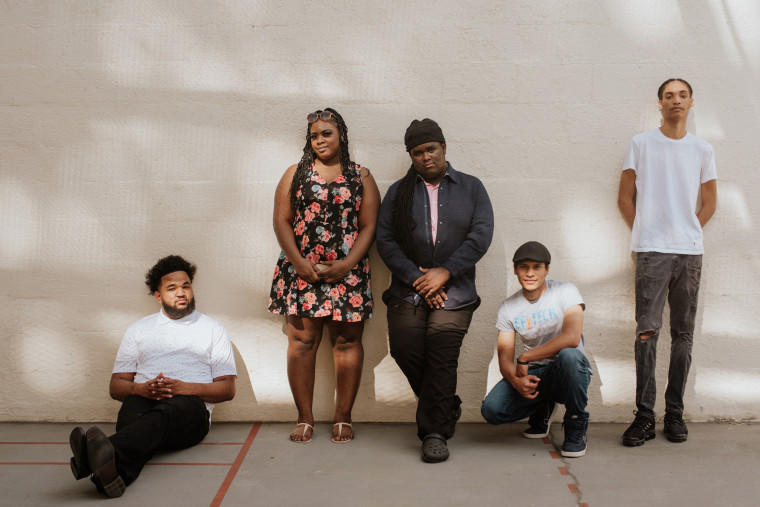DETROIT — Michigan is catastrophically failing to provide many of the most vulnerable children in its care with a quality education, delaying some teenagers’ graduation by years or leaving them so frustrated that they drop out of school, according to foster youth, their advocates and educators who’ve tried to help them.
NBC News spoke with 10 current or former Michigan foster youth who collectively spent time in more than a dozen residential facilities in recent years, either because social workers couldn’t find a family to take them or because the state said they needed treatment for mental health or substance misuse issues.
All of them attended classes for months or years with other young residents of those facilities.
All of them were assigned schoolwork and completed it, they said.
Some thought they’d received quality instruction from caring teachers. Others recalled being largely parked in front of computers or handed packets of worksheets.
But all of them learned a difficult lesson when they moved out of these facilities and tried to transfer to a public school: The classes they took in the state-funded, state-licensed institutions didn’t necessarily count toward graduation.
“They said I had no credits so I had to start over,” said Kayla Goshay, 23, who learned at 18 that the classes she took during two years in a home for girls weren’t reflected on her transcript. She suspected the courses weren’t great — girls ages 12 to 17 were all taking the same online classes at the same time, she said — but she was told she was working toward a diploma.
“I was shocked,” she said. “I was hurt and irritated because I thought I was doing something and I really wasn’t doing anything.”

Children in foster care face some of the nation’s steepest obstacles to graduation, with only about 54% earning a diploma or GED certificate by age 19, compared to about 86% of public high school students overall.
Foster youth placed in institutions — a group that's disproportionately Black and Latino — face even longer odds, experts say, since they’re more likely to have unmet social and emotional needs, and they’re less likely to have foster parents to speak up for them.
Their problems are compounded in states like Michigan, where the child welfare system and education officials pay little attention to the instruction facilities provide and have failed to ensure that facilities comply with laws requiring the timely transfer of academic records, educators and foster care advocates say.
“These are children who haven’t done anything to deserve what’s happened to them,” said state Rep. Stephanie A. Young, a Democrat from Detroit who serves on the Legislature’s child welfare and foster care task forces. “Instead of really help prepare them, really help equip them, we’re giving them the short end of the stick with inadequate education.”
Michigan’s child welfare and education agencies say they have no way to comprehensively or systematically oversee the quality of education provided in facilities. The contracts the state has with 58 institutions require them to provide children with “appropriate educational services” but leave the definition of “appropriate” up to the companies or organizations that run them. That means the facilities approach education in different ways, with some sending students to nearby public schools and others operating on-campus schools that are overseen by a local district or run as a charter school or private academy. The private schools are largely beyond the reach of government oversight.
And many of the programs — both public and private — are clearly not meeting students’ needs.
“I felt destroyed. I felt like everything I did was for nothing,” said Christian Randle, 17, who has spent the past year trying to get credit for the ninth and 10th grade classes he took in a mix of public and private schools while living in residential facilities.
Randle has become so frustrated seeing his hard work “swept away” that he decided last month to give up on a diploma and is now pursuing a GED certificate, he said. He’s part of a group of youth in Michigan who are pushing the state to address the issue.
“They take us away from our parents for things that they’re not doing, but then y’all not doing the things you’re supposed to do,” he said of state officials. “Who’s going to take us from you?”
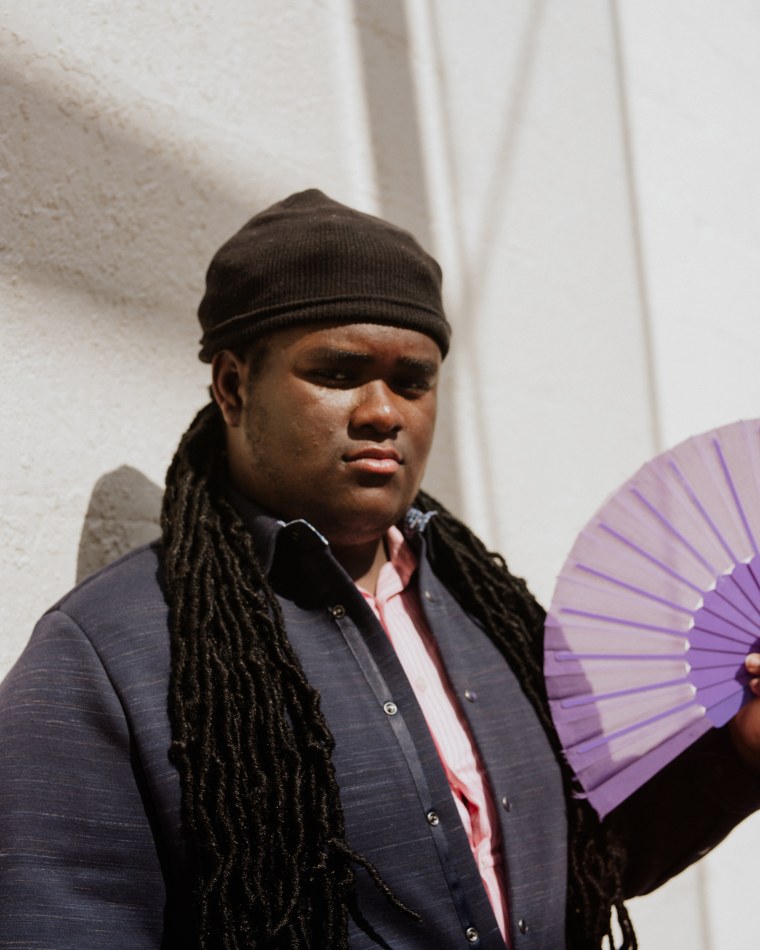
‘They become hopeless’
Many of the foster youth advocating for changes in Michigan say they’re not entirely sure why they didn’t get credit for the classes they took.
Some suspect the instruction they received was below grade level.
“She was teaching us like fifth grade math, like times tables,” said Raymond Miller, 19, of classes he took in the 10th grade in a Detroit facility that he never got credit for.
Some described their schools as chaotic.
“We probably had a new teacher every two weeks,” said Renard Baldwin, 20, of the classes he took in a different Detroit facility. “The residents would always run off the teachers. They would quit.”
Some said they couldn’t complete their classes because the state moved them midsemester. Others said they finished their classes only to discover that their credits had evaporated in the bureaucratic haze of the child welfare system.
“To this day, we are still struggling, with help from attorneys, to find any source of transcript from any school I’ve been to since I’ve been in foster care,” Randle said, referring to schools he attended since he was 12. “They don’t have one transcript for me — literally not one.”
When students do get their transcripts, they often discover that they took the wrong classes, said Chuck Fabbro, the principal of a school on the grounds of a treatment facility run by Wolverine Human Services in Vassar, Michigan.
“The biggest issue I see with other programs is they don’t take a look at what the student needs and just put them in classes,” Fabbro said. “They’ll put you in Earth science twice.”
Fabbro, whose school is overseen by its local school district and serves both foster youth and children in the juvenile justice system, estimated that more than 10% of students who arrive from other residential facilities have an issue with their credits. They may have thought they took ninth grade math when in reality they were in a remedial course that doesn’t meet ninth grade requirements, he said.
“They become hopeless,” he said. “They think they’re close to graduating. We get them this close to the end of the road and then we have to have tough conversations.”

Those conversations can lead to students dropping out.
“I was too irritated to do anything,” said a 19-year-old who lived in six residential facilities after entering foster care at age 10 and spoke on the condition that his name not be published out of concern for his privacy. He left school a year ago, unsure when he’ll return. “I put all this time in to make sure I got a high school diploma, so for me to get pushed out and told, ‘You’re not even close to finishing,’ I’m irritated as crap.”
Christopher Jaco, 20, chose to stay in school — but at a cost.
Jaco, who was 6 when he entered the system, spent his early teens clashing with staff in residential facilities. He’s a towering Black man — 6 feet, 9 inches tall — who believes that facility staff were afraid of him. They kept putting him on psychiatric medication that he didn’t think he needed and punishing him when he refused to take it, he said. He kept running away, and the state kept moving him, he said, cycling him through six or seven residential facilities including a juvenile detention center.
By the time he moved into an independent living group home at 16, the Detroit charter school where he enrolled could barely find any completed credits on his transcript, a school administrator recalled. He was told he’d have to start as a ninth grader — a blow to his plans of graduating on time.
But Jaco was determined. He has ambitious dreams of owning a large successful business — maybe a trucking or real estate company — and starting a nonprofit organization to help the next generation of foster youth. He buckled down, waking up at 4 a.m. every day to work out, then spending 10 or 11 hours in class to cram four years of school into two years — all while playing on his high school basketball team, running a small business selling lanyards and finding time to buy groceries and cook for himself, he said.
He’s now a college sophomore majoring in business and communications, but he resents the sacrifices he had to make.
“It’s not like my family could help or step in and assist with my learning situation,” he said. “It falls back on the state. They had custody of me. They’re supposed to make sure that I’m bound to be successful and bound to go to college.”
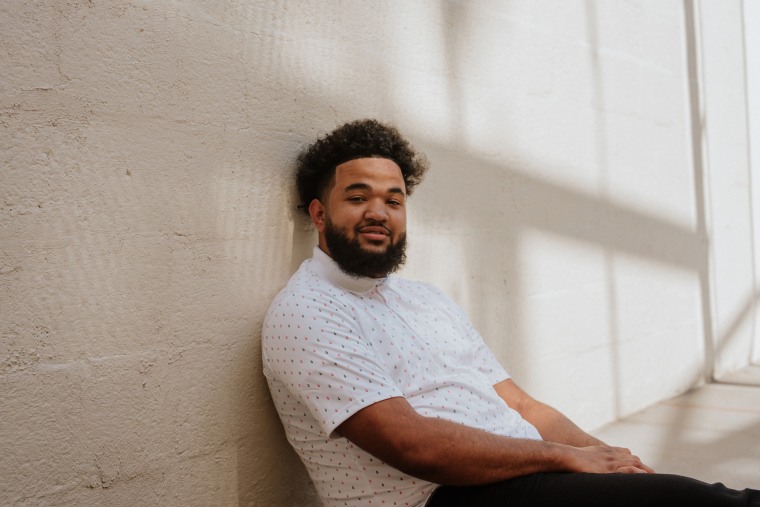
‘Just go fix it’
State officials in Michigan say there’s not much they can do to make sure that youth in their care are earning credits toward a diploma because graduation decisions are made by individual districts — not by the state.
While all public schools use the Michigan Merit Curriculum, which spells out how many credits students need in each subject to graduate, the state’s more than 800 districts and charter schools each set their own standards for what constitutes a credit — and whether to accept transfer credits from other schools.
That means the state can’t require that the credits students earn in residential facilities count in another school, said Rachel Willis, the director of out of home services for the state’s Department of Health and Human Services.
“MDHHS can require that youth in child-caring institutions receive an education,” she said in a statement, “but can’t require the credits be picked up by the next school because that’s a decision made by individual school districts and schools.”
The state doesn’t keep track of how facilities educate the youth in their care, Willis said. Her agency denied a public records request seeking information about education in facilities, saying it “does not have documentation on the quality of instruction and/or educational outcomes.”
Instead, social workers and attorneys in the system should ensure the children on their caseload get an education, Willis said. If a child isn’t making progress, their worker should intervene, she said.
Since hearing from Michigan foster youth about educational issues, the agency has met with facilities and education officials to better understand the problem, a spokesman said.
The state Education Department similarly says there’s not much it can do about education in facilities since schools are largely overseen by local authorities.
Outside of the foster care system, Ruth Anne Hodges, the manager of the Michigan Department of Education’s education experiences unit, said her department frequently fields calls from parents who moved their children from one district to another and are having issues with credits transferring. The state usually tells those districts that they must allow students to test out of a course they’ve already taken.
“You can’t just categorically deny somebody’s credit without allowing them the chance to prove they’re proficient in the content,” she said. “By law, they have to allow the kids to test out.”
But foster youth may not have anyone on their advocacy team who knows which classes they’ve completed or how to prove it.
Judith New, an education lawyer who represents foster youth in Detroit and surrounding areas, said she’s advised clients for years to do whatever is needed to graduate.
“If you have to go back and repeat some of these classes, you know, just go back and do them,” she recalled saying. “Suck it up and do them.”
It wasn’t until recently that she realized the problem was systemic. She’s among advocates now calling on the state to do a better job of overseeing the education foster youth receive.
“Just go fix it. It can’t be that hard,” said Lynda McGhee, an executive director with the Michigan Children’s Law Center, who says problems with credits transferring are “more common than not” when foster youth leave facilities.
“We took them from their homes and said we could do a better job of raising them,” McGhee said. “We have foster youth who want to graduate and can’t because the system that was supposed to protect them and take care of them failed them.”
Advocates for foster youth say the best way to ensure kids get a quality education is to avoid placing them in facilities in the first place, allowing them to stay with foster families in their local public schools.
That’s something the state has been prioritizing recently, especially following the 2020 death of Cornelius Frederick, 16, who died after being restrained at Lakeside Academy, a now-shuttered youth facility in Kalamazoo. In response to Cornelius’ death and a newly implemented federal law that requires states to place foster youth in institutions only when mental health professionals deem it necessary, the state has shifted where youth are housed. Of more than 10,000 youth who were in foster care in May, just 380 were in facilities, down from 1,171 in March 2020.
‘Last on the list’
Children living in facilities are often far behind academically and need intensive support. But many don’t get that academic help, said Sarah Fathallah, vice president for research and design at Think of Us, a national research and advocacy organization.
After interviewing 37 foster youths from 30 states, the organization found that nearly all of those who attended schools in institutions reported getting poor-quality instruction, often in multigrade classrooms with minimal resources and ill-prepared teachers, Fathallah said.
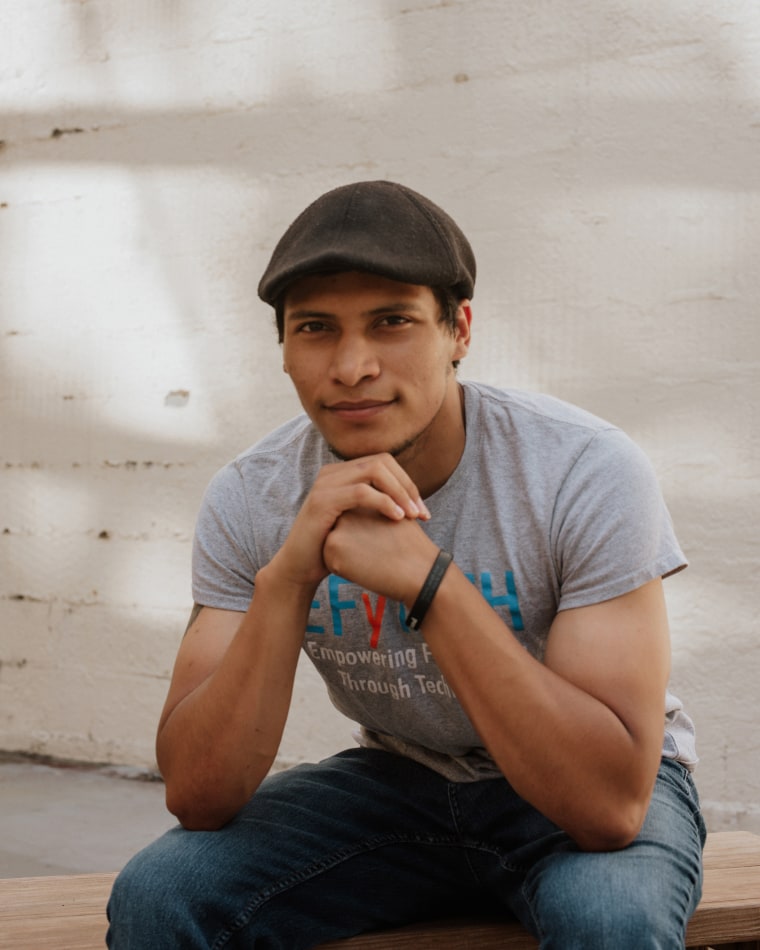
Educational issues in these facilities often don’t get much attention, because the facilities also face urgent challenges in hiring qualified staff and managing tense situations, said Shereen White, the director of advocacy and policy for Children’s Rights, a national civil rights organization.
“People are so focused on keeping the place from exploding on the inside and they’re so focused on all of the dangers that we know are associated with institutionalizing youth that the education is subpar or last on the list or they don’t focus on it,” White said.
People who run residential facilities in Michigan say they’re doing their best to support children in crisis. The youth they serve often have significant mental health and academic needs that may not have been clearly documented as students were moved from school to school.
Kevin Roach, the CEO of MCHS Family of Services, which runs a century-old home for boys in Redford, Michigan — where Randle said he spent months filling out worksheets in a multiage classroom — noted in a statement that studies show students lose an estimated four to six months of academic progress every time they switch schools.
“MCHS advocates to ensure all of our young people receive the educational services and the supports they need to thrive,” he said.
Susan Rosas, the president and CEO of Holy Cross Services, whose organization runs three facilities including the one where Goshay said she completed coursework in a multiage classroom for which she never got credit, said in a statement that youth come and go from her facilities based on their treatment needs — not academic ones. That means they leave credits unfinished.
Her organization sends transcripts when students move on, she said, but, until last year, it had no dedicated funding for “longer-term case management and advocacy responsibilities.”
“It is unreasonable to expect a child to navigate such complicated education systems,” on their own, Rosas said, adding that no one is currently providing the support and advocacy foster youth need.
The Detroit Behavioral Institute, where Baldwin said he had a rotating cast of teachers from the affiliated Capstone Academy, is shutting down. The state suspended the institute’s license for at least five years as of July 8, after finding that children there were mistreated and the facility was unsafe, a spokesman for the state health and human services agency said.
A woman who answered the phone at the Detroit Behavioral Institute declined to comment. Representatives from Capstone, which operates two other schools in Detroit, did not respond to requests for comment.
The school where Miller was enrolled when he said he did fifth grade work as a 10th grader was a charter school called ACE Academy. Last year, ACE was shut down by its authorizer, Central Michigan University, due to “critical issues with their special education services,” a spokeswoman said. Edtec Central, ACE’s management company, did not respond to requests for comment.
Wolverine Human Services, which runs the facility where Miller lived in Detroit, had a longtime partnership with ACE that ended when the school closed. Since then, Paul Whitney, Wolverine’s vice president for residential programs, said the facility has been sending youth to other Detroit charter schools but isn’t able to vet the quality of instruction.
“We advocate for our kids to finish these programs and receive the education,” he said. “It’s kind of hard for us to tap into the charter academies themselves to assure that they’re getting the right classes. That would be a tough sell for us.”
‘Put the kids in real school’
The campaign to address education issues emerged last summer among youth participating in a summer jobs program with Empowering Foster Youth Through Technology, or EFyTECH.
Members of the group each had to name a personal goal, said Saba Gebrai, the program director for the Park West Foundation, which helps foster youth as they age out of the system and supports EFyTECH.
Randle announced that he wanted to take dual enrollment courses, which let students earn college credits while still in high school, so he could begin working on his career goals, which have included becoming a judge, a therapist or an engineer.
But when his missing transcripts put dual enrollment classes out of reach, he and his friends came up with a different goal: righting a wrong. Gebrai helped them organize a series of meetings this year with state lawmakers and state education and child welfare officials.
Their emotional stories took the officials by surprise.
“This has definitely been very enlightening for me,” said Tracey Silas, a deputy director at the Michigan Department of Health and Human Services, according to a recording of an April meeting. “Some of the circumstances that you all shared are very traumatic, and I can see how that certainly was not an experience we would want our young people to have to have going forward, and we as a department really need to do a better job at ensuring that these things don’t happen in the future.”
Young, the state representative, has been working with the youth to craft legislation that could lead to better state oversight and hold institutions accountable. “These people get paid a lot of money to take care of these babies,” she said. “There needs to be an accredited education built into these centers.”
Michigan doesn’t have a formal accreditation process for public or private schools, but Young said there are other ways to require that foster youth are working toward a diploma. The state pays facilities about $250 to $900 per child per day depending on the level of service they provide.
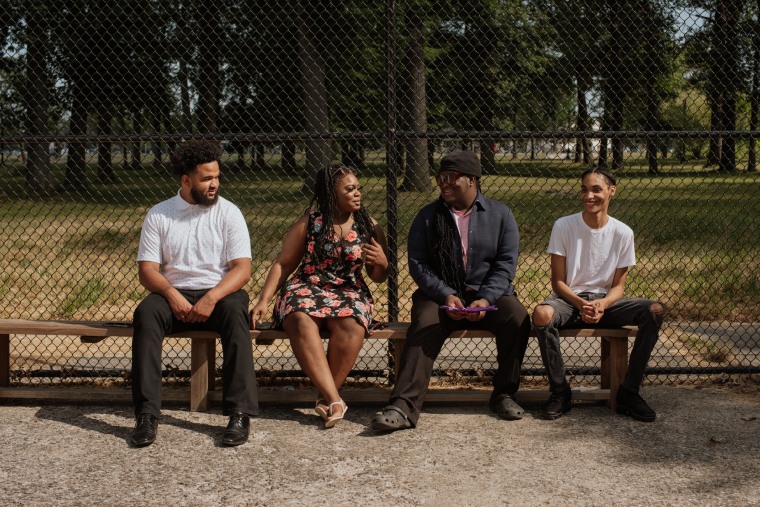
The youth are calling for other changes as well, including a law that would require facilities to provide students with their transcripts on the day they move out. They want policy changes barring the foster care system from moving children without confirming that they’ll be able to finish the coursework they’ve started. And they want the state to revise its contracts with facilities to define “appropriate” education as coursework that meets the graduation requirements of the Michigan Merit Curriculum, meaning remedial courses, job training and GED programs wouldn’t suffice.
These changes are crucial, said Goshay, the 23-year-old who learned at 18 that the two years of classes she attended in a residential placement didn’t count.
For Goshay, the devastating impact of the foster care system has gone far beyond education. Her younger brother, Cornelius, was the 16-year-old who died after being restrained in Kalamazoo. The pain of that loss hit Goshay just as she was aging out of the system.
By then, she had finally begun to put the difficulties of her childhood behind her, she said. She’d returned to school after initially dropping out when she learned she’d have to repeat two grades. She’d earned a diploma and had become a certified nursing assistant. But her brother’s death “made it difficult for me to live my life,” she said. “I still feel lost.”
She resents the extra burdens she’s had to bear — and called on the state to do better, not only in protecting the lives of children like her brother but also in making sure they can get the education they deserve.
“They should put the kids in real school,” she said. “Like a real high school with real people and real work and real credits, so once they get done with being in a placement and they go on with their life, they’ll know they’ve got a high school diploma.”
